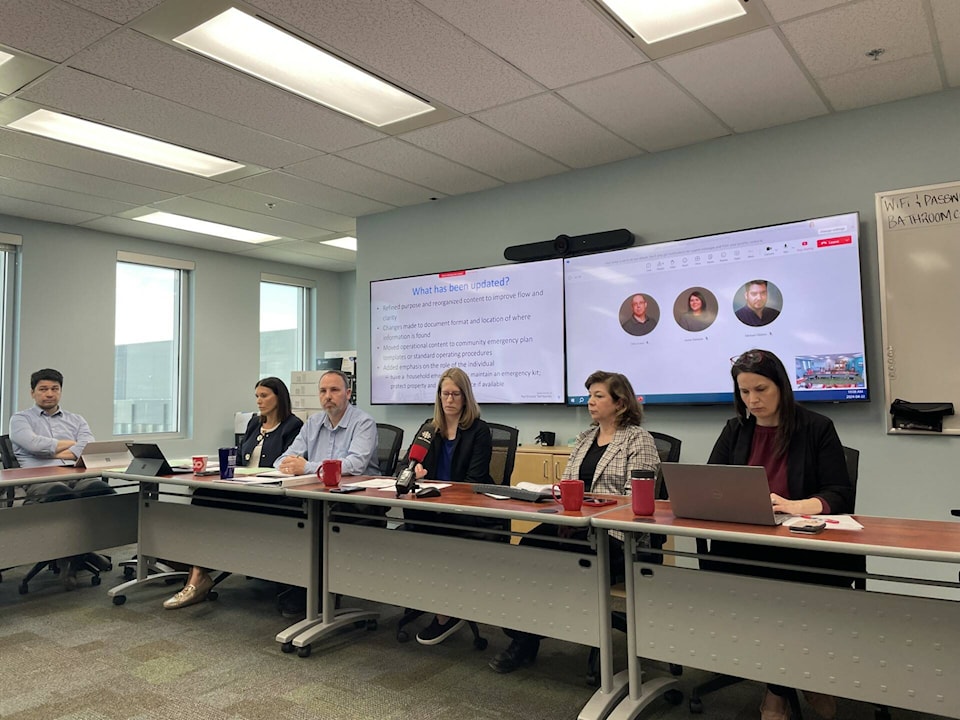The GNWT revealed their updated emergency plan on Monday and the message is clear: people should be readying themselves for whatever may come.
The 20-minute presentation outlined how the plan, which came into effect on April 18 and replaces the old plan from 2018, is meant to clear up any confusing language and make it easier to understand who has what responsibilites, including local authorities, Indigneous governments and the GNWT’s Emergency Management Division.
“I would really encourage all residents to undertake personal preparedness activities,” said Emily King, director of public safety for the Department of Municipal and Community Affairs (MACA). “Get insurance where it’s available.”
The new plan comes in the wake of last year’s evacuations and wildfire season as well as from the 2021 and 2022 flood seasons.
Each department in the GNWT needs their own business continuity plan, King added.
In a 70-page document that accompanied the presentation, it notes climate change as being the hazard of why things have worsened.
“Floods and wildfires are typically the highest risk hazards throughout the NWT. These hazards have frequently caused extensive damage to people, property, the environment, and the economy,” the document reads. “Both hazards are also expected to increase in frequency, severity and duration due to climate change, causing more extensive damage in the future.”
The document also stated that in the event of a large-scale natural disaster, the federal government provides financial assistance to a province or territory in need through Disaster Financial Assistance Arrangements (DFAA). Assistance only comes when response and recovery costs exceed what that province or territory could reasonably be expected to bear on their own.
Last year, the GNWT reportedly spent about five times more than what was budgeted for.
How long it takes to get help depends, King said. According to the plan, a request for reimbursement with the DFAA requires the right documentation of expenditures and a review by federal auditors.
That can take several years before a territory or province is finally reimbursed.
“It takes a while to gather the background documentation,” King explained, adding that a territory or province could apply for advances if needed. That’s what the GNWT did last summer for wildfire season.
King also said the territorial government is upping its capacity to respond to emergencies with surge staffing. THe GNWT has reportedly found more than 9o government employees who could support incident management teams, if necessary.
“That was a big issue last year,” King said. “Big lesson learned.”
In speaking with NNSL Media Monday afternoon, MACA Minister Vince McKay said emergency plans are designed to try to educate everybody, including residents, that there is an individual responsibility to be prepared.
“I’ve been involved in this stuff for a long time — just knowing when there’s an emergency, depending on the event, the people in the local government are usually the most experienced in the area for the type of emergency,” he said. “For example, it’s impossible for somebody in Hay River to tell somebody in Paulatuk what to do. People don’t know what’s happening there.”
McKay, who’s also a first responder, stressed the key to making things work is communication.
“You try to plan for everything but sometimes you might not plan for (a certain) type of emergency,” he said. “It gets to a point where we realize this emergency is out of our control then they would be communicating with the territory.
“Likewise, if the territory finds we don’t have the resources in place, we would communicate with the federal government. Every single department should have some kind of emergency plan and preparedness in place.”
One of the massive criticisms of last year’s evacuation was the lack of communication from all levels of government. That’s something McKay is confident won’t be an issue this time around should there be the need to evacuate a community.
“I’m not saying any department did anything wrong last year, I just know from my experience that I wasn’t comfortable with some of the communication,” he said. “But I think going forward there’s been a very big push from every department within the government to get clear communication.
“I think the big thing is is the capacity issues and the ability to handle and deal with emergencies. We can only prepare for so much, obviously, and we’re trying our best to get ahead of that. Sometimes you’re dealing with stuff that you weren’t prepared to deal with conceptually.”
